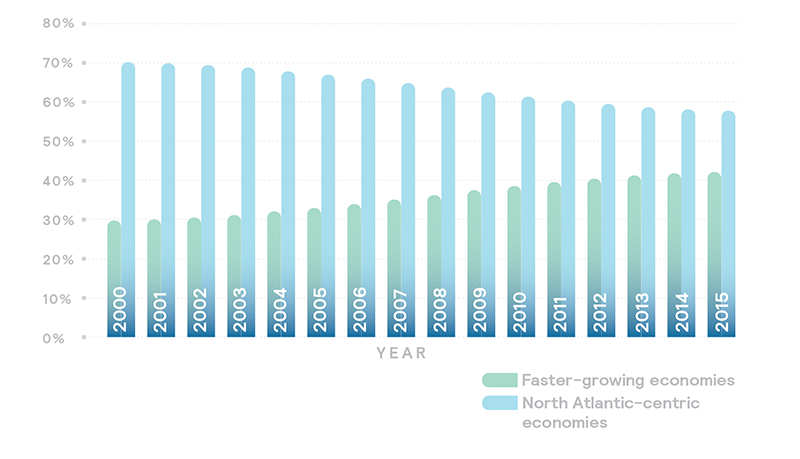Although the economic story of the twenty-first century is still very young, its first two decades can arguably be summarized as a period of transition in global economic leadership. The North-Atlantic-centric economies that have dominated the global economic landscape for the better part of the past century and a half are handing the baton off to the faster-growing or “emerging” economies of Asia, Latin America and Africa. By the end of the third decade of the century, the transition will likely be complete, with the anchors of global economic growth cast across the Pacific and the Southern Hemisphere.
With an ever-larger and increasingly educated middle class, particularly in Asia and Latin America, growth in consumption and business investment in these regions will not only lead the way as the engines of global economic activity but will contribute to a gradual transition toward higher-end consumer goods and business services, such as healthcare, insurance and investments.
Transition in Global Economic Leadership
Since 2008 and the peak of the financial crises, faster growing economies have dominated new economic activities globally. According to estimates from the World Bank, the global economy has added US$10.655 trillion to its GDP during this period, of which roughly US$8.28 trillion — or more than 77% — have come from the faster-growing economies. Since the beginning of the century, nearly 65% of all new activity has occurred in these economies, which, as of the end of 2015, represent slightly more than 42% of the global economy, up from almost 30% at the end of 2000.




